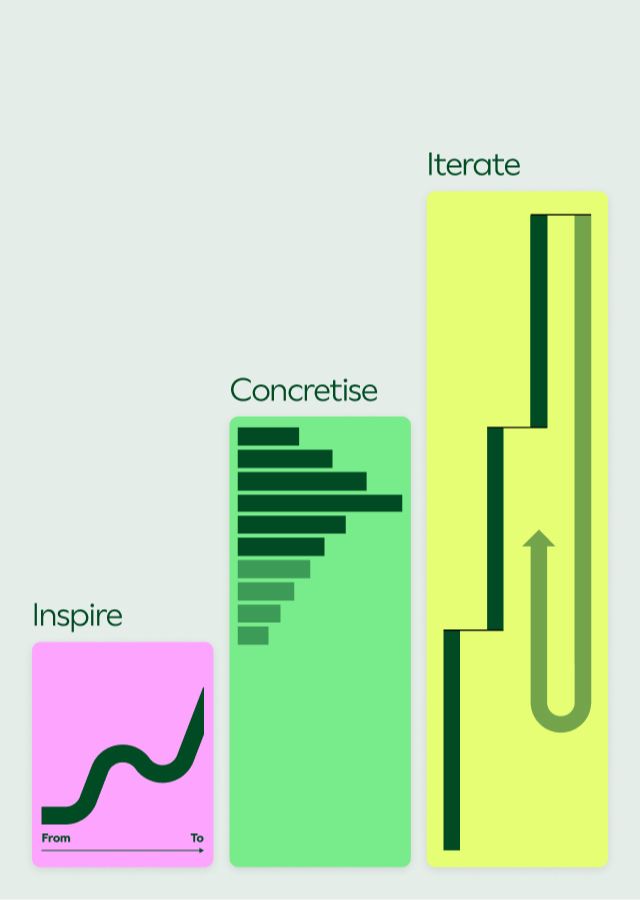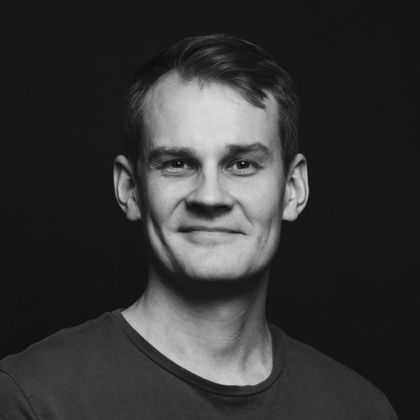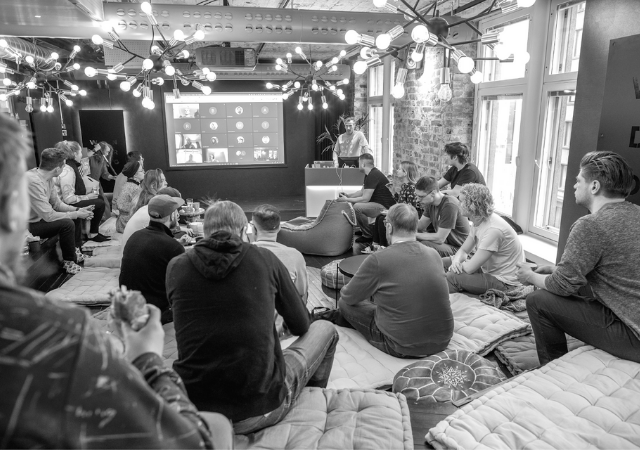Article
How can design drive organisational change – Growberry

How should we start building excitement and sense of purpose in your organisation?
Article published originally here.
Inspire, concretise, iterate
The process of thinking what’s next for any organisation -and it doesn’t really matter whether operational or strategic development- is often a strenuous ordeal. We’ve all seen it: a task is so broad, we’re tempted to make some sense of it by distilling the entire future vision into a few words (usually four to six bullet points) with good intentions but so broad they could apply to almost any other organisation in the industry.
There is nothing wrong with starting at the high level but often the level below, the tangible, is missing: what concrete steps we are taking to become a leader in sustainability in our industry? How do our principles show up in the end product? How should I change my actions because we want to become partners with our customers? If an organisation can’t communicate the next steps, how could it rally its employees to shape the future?
So how should we start building excitement and sense of purpose in your organisation?
Build inspiration and excitement
Very few people have the authority to force change (and even then it’s rarely sustainable) but we all have the power to envision the future and take a lead to inspire the change! We’ve seen all too many change management projects where the project itself has felt like the output -an activity for activity’s sake- rather than a real transformation. A more efficient way to encourage change is to show people a future more exciting than the past. To really demonstrate how this change might affect their work and lives.
So how do we create an inspirational working environment? There are design methods that can assist in the process: instead of open-ended questions, aim for tangibility in your research efforts. Come with clear intentions on what we are trying to achieve. Build trust and empathy to understand why some might be hesitant about the future. Be concrete and leverage storytelling to show what good looks like.
Without inspiration nothing moves. Ultimately we need to find ways to convince your peers and customers to work together on the journey. But what happens once we’ve identified a direction?
It’s easier to show than to describe
London underground is easier to navigate with a map than by description. There is a good reason why graphical user interfaces overrode MS-DOS. Hell, Tesla convinced 3 million people to pre-order its Cybertruck! A truck practically no one has driven but people have seen it — talking about convincing by an image! Yet, the power of making change tangible, concrete and visual is rarely fully utilised in building that common vision everyone can look at, discuss, criticise — and ultimately improve.
When shaping the vision, consider how we might visualise the relevant data? Peter Drucker famously said, “If you can’t measure it, you can’t improve it.” But there is also the step of making sense of the data to ensure we’re concentrating on the right metric and we facilitate (rather than rule out) new opportunities and ideas to arise. In numerical data, many (if not most) people tend to miss patterns, relationships and trends – everything that really matters. A considered data visualisation can deliver a shot of reality making the scale of challenges and opportunities evident.
Besides data, new product offerings and processes should be prototyped as early as possible, especially when prioritising efforts and making investment decisions. Experience and interaction design can be more than R&D. It can be a tool to guide decision making offering a sneak peek into what better looks and feels like, and how it might impact customer and/or employee experience. Of course we want to make the right decision, but often we also want to feel that. Design can help you win over hearts and minds, and build internal buy-in to move from proposal to action.
Platform for continuous development
There has been a time when product and process development was in pursuit of the single best solution. Today everything is moving at a phase where no design or solution is perfect nor permanent. Because of this we better prepare for continuous development that is embedded in the organisational culture and to enable that processes must be collaborative and inclusive – inviting and encouraging participation and improvement.
The point of prototyping is to keep prototyping – iterating. And similarly the point of an organisation being open to test, conceptualise and visualise its goals will lead to continuous improvement of testing, conceptualising and making things tangible.
This requires a profound acknowledgement that there is always room for improvement. Every solution should be seen as the latest of many iterations, not as a ready made solution, to allow and encourage future innovation to take place and to make sure we don’t steer away from new possibilities we didn’t think of before.
What are your organisational change challenges? Growberry ensures that your transformation journey is about opening new possibilities, and creating a tangible and lasting impact.


